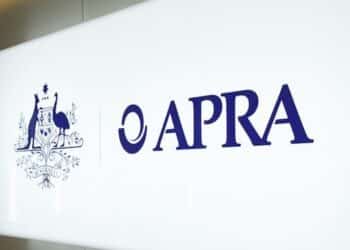The Treasurer revealed a $36.9 billion deficit (1.5 per cent of GDP), which is well under the $78 billion shortfall predicted in March this year.
But, while the federal budget is $41.1 billion better off, a predicted decline in conditions in two years’ time has translated into a bread-and-butter budget.
According to the Treasurer, deficits will be worse in the out years than previously expected as a result of substantially higher spending on the cost of debt, aged and health care, and the National Disability insurance Scheme (NDIS).
Tuesday’s budget also included downgrades to domestic and international economic growth. While the economy is forecast to grow by 3.25 per cent in 2022–23, the “weaker global outlook, high inflation, cost-of-living pressures, and higher interest rates” are expected to see growth slow to 1.5 per cent in 2023–24.
According to the budget papers, annual inflation is expected to peak at 7.75 per cent in late 2022, before moderating gradually to 3.5 per cent by June 2024 and returning to the Reserve Bank’s inflation target by 2024–25.
Moreover, the unemployment rate is forecast to rise to 4.5 per cent by the June quarter of 2024 but remain below pre-pandemic levels.
Three objectives
The Albanese government’s first budget has three objectives: responsible cost‑of‑living relief; strengthening the economy; and beginning the hard yards of budget repair.
“We now confront the prospect of a third global downturn in a decade and a half,” Mr Chalmers said.
“This time, not a financial crisis or a pandemic, but a war driving high prices and higher interest rates here and around the world, and the risk of another global recession. This time demands a different response. One that puts a premium on what’s responsible, affordable, and sustainable,” he continued.
“That’s why this budget pays for what’s important, strengthens our buffers against adversity, and begins to build a better future.”
And deemed important are cheaper child care, and more paid parental leave; better access to health care, cheaper medicines, and a better standard of aged care; fee-free TAFE and more university places; cheaper and cleaner energy; and, more affordable housing.
Missed opportunities
Starting with missed opportunities, the Labor government did not include much sought-after measures that would have eased business processes for advisers considerably. These include extending the freeze on the ASIC levy for another year, and granting financial advice tax-deductible status.
Earlier this month, the advice industry pleaded with Treasurer Chalmers to freeze the ASIC industry levy for a further 12 months to ensure cost certainty for the sector during FY 2022–23, while Treasury reviews ASIC’s Industry Funding Model. However, this measure was missing in Tuesday’s budget.
SMSF residency requirements
The government also announced it will defer the start date for the proposed changes to the SMSF residency requirements.
The budget papers revealed that Labor will defer the start dates for a number of tax and superannuation measures to allow sufficient time for policies to be legislated.
Surprise franking credits move
The government intends to “improve the integrity of the tax system” by aligning the tax treatment of off-market share buybacks undertaken by listed public companies with the treatment of on-market share buybacks. This measure will apply from announcement on budget night.
This measure is estimated to increase receipts by $550.0 million over the four years from 2022–23.
More money for ASIC
The budget does, however, set aside $80.0 million in 2022–23 for the Australian Taxation Office (ATO) and the Australian Securities and Investments Commission (ASIC) to continue the “design and delivery” of the modernised registry platform.
The budget also points to a slight staff count growth at the corporate regulator — from 1,947 last financial year to 1,998 in the current financial year.
Additional funding
The government also said it will provide additional funding to support the delivery of government priorities in the Treasury portfolio, including:
- $2.7 million in 2022–23 for the Treasury to support reviews of the Reserve Bank of Australia and the regulatory framework for managed investment schemes
- support for ASIC to administer the financial adviser exam, to be partially cost recovered from examination fees — costs, the government said, are “not for publication” due to commercial sensitivities.
Superannuation — expanding eligibility for downsizer contributions
The government confirmed it will allow more people to make downsizer contributions to their superannuation, by reducing the minimum eligibility age from 60 to 55 years of age. The measure will take effect from the start of the first quarter after Royal Assent of the enabling legislation.
The downsizer contribution allows people to make a one-off, post-tax contribution to their superannuation of up to $300,000 per person from the proceeds of selling their home.
Climate reporting standards
The government pledged $36.1 million over four years from 2022–23 (and $6.9 million per year ongoing) to support the delivery of government priorities related to climate modelling and the development of climate reporting standards.
Funding includes $29.8 million over four years from 2022–23 (and $6.9 million per year ongoing) for the Treasury to restore capability to model climate risks and opportunities; and, $6.2 million over four years from 2022–23 for the Treasury and the Australian Accounting Standards Board to develop and introduce climate reporting standards for large businesses and financial institutions, in line with international reporting requirements.
Tax
As expected, Labor did not make any changes to the stage three tax cuts in this budget.
Instead, as promised, it has cracked down harder on tax abuse by multinationals and the rich as it looks to raise over $4 billion in extra revenue.
“By making sure multinationals pay a fairer share of tax in Australia, by extending successful tax compliance programs, and by giving the ATO the resources they need to crack down on tax dodging,” Treasurer Jim Chalmers said.
“Together, these initiatives save a further $4.7 billion over four years.”
Small business support
The government said it will provide $15.1 million over two calendar years from 1 January 2023 until 31 December 2024 to extend the Small Business Debt Helpline and the NewAccess for Small Business Owners programs to support the financial and mental wellbeing of small business owners.
This measure will redirect partial funding from the Australian Small Business and Family Enterprise Ombudsman component of the 2022–23 March budget measure titled Small Business Support Package, and savings identified as part of the spending audit, the budget papers confirmed.
Super for housing
Moreover, the Treasurer announced a down payment on the super for housing policy to get the idea off the ground and encourage more institutional investment into affordable housing.
Referring to it as the Housing Accord, the idea is to build one million new homes over five years from 2024 through a collaboration between governments, investors and industry.
“I am proud to announce that we have just struck a new National Housing Accord between governments, investors and industry, to build the affordable homes our country desperately needs, and to help tackle our housing crisis,” the Treasurer said.
“The ambition of this Accord is big and it’s bold — an aspiration to build one million new, well-located homes over five years from 2024.”
As part of the Accord, the government will provide $350 million over five years, with ongoing availability payments over the longer term, to deliver an additional 10,000 affordable dwellings.
States and territories will also support up to an additional 10,000 affordable homes, increasing the dwellings that can be delivered under the Accord to 20,000.
“Institutional investors, including superannuation funds, have endorsed the Accord and will work with us to leverage more investment that delivers for their investors’ and members’ interests, and for the national interest,” the Treasurer said.
This measure complements the government’s investment in the Housing Australia Future Fund, which will provide a further 30,000 social and affordable homes over five years.
Getting wages moving again
On top of supporting a pay rise for about 2.7 million workers on the minimum and award wages — with majority of them women — the government has also committed to supporting a wage increase for aged care workers.
Paid parental leave and childcare
The government is investing over $530 million over four years from 2022–23 to expand Australia’s paid parental leave scheme to 26 weeks by 2026. This will happen under a staggered plan which will see the addition of two extra weeks to the program every year starting in July 2024.
The six months of paid parental leave is also set to become more flexible, meaning parents will be able to share it more equitably between each other.
Women’s budget statement
Minister for finance, women and the public service, Katy Gallagher, said that the budget includes more than $7 billion for initiatives to drive gender equality.
“Australian women are front and centre of Labor’s first budget, as the Albanese government begins the job of delivering on our election commitment to make Australia a world leader on gender equality,” she said.
Along with cheaper childcare and a boost to paid parental leave, $1.7 billion will be invested over six years to improve women’s safety at home, work and in the community.



